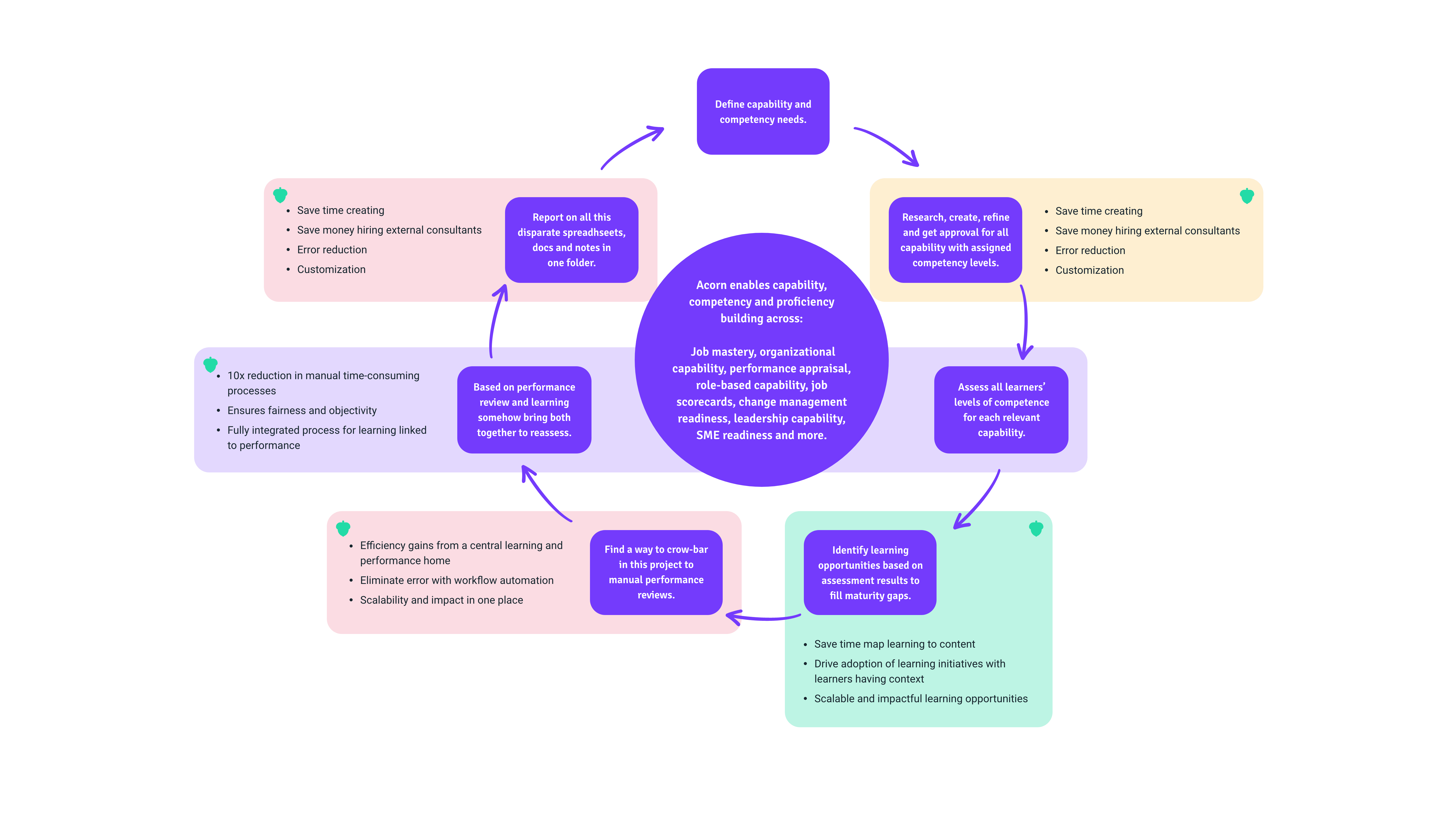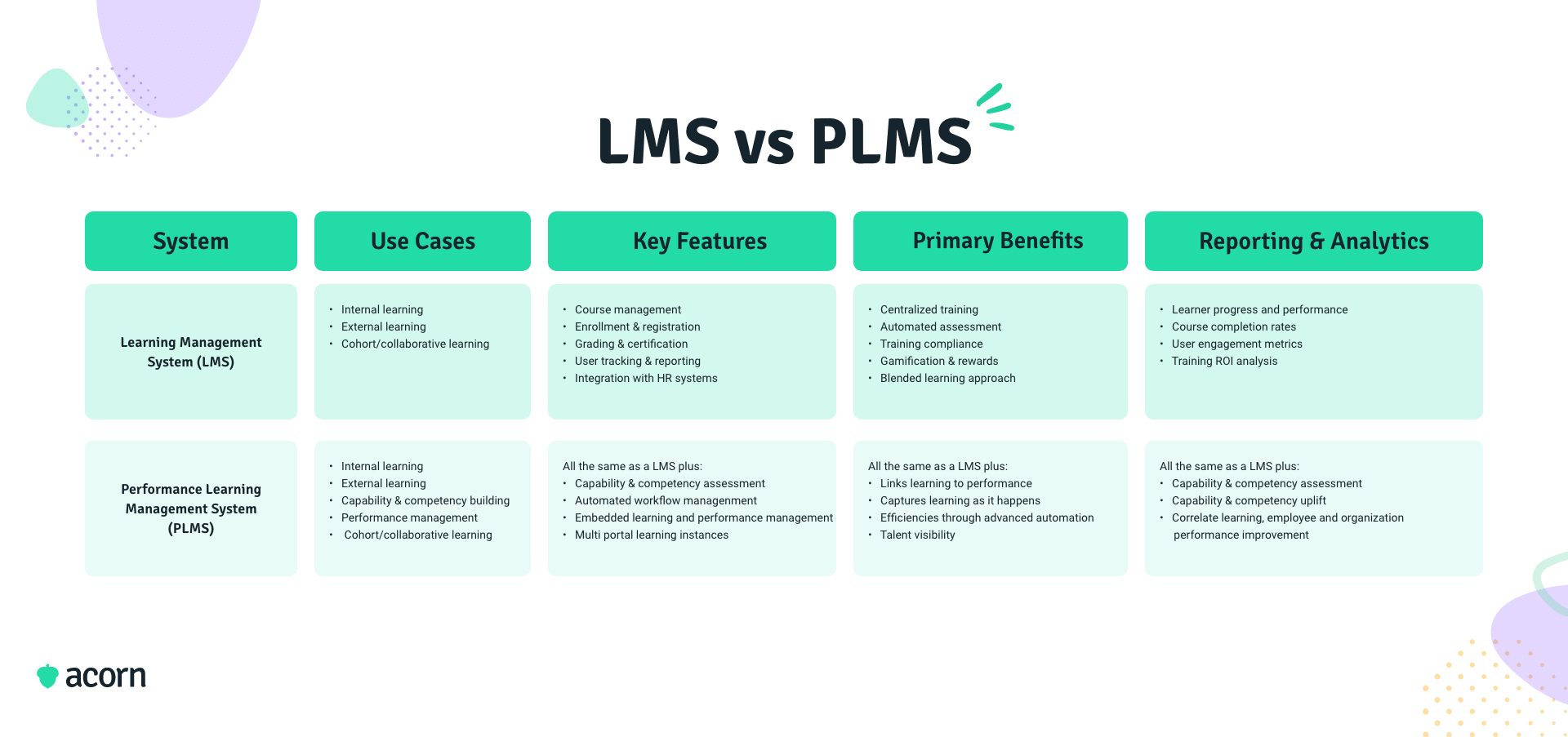How to Get Job Scorecards Right with Competency Frameworks
Reading Time:

Lead the pack with the latest in strategic L&D every month— straight to your inbox.
SubscribeThe job scorecard is no simple thing. Done right, it supports recruitment, L&D, succession planning, and organisational development.
You just need to get the scorecards right, of course.
In this guide, we’ll talk about how to create job scorecards that align employee and organisational performance, as well as some pitfalls to avoid.
How to create job scorecards based on a competency framework
Taking a competency-driven approach to employee performance allows you to bridge the gap between everyday work and business plans.
It’s a three-step process for creating job scorecards based on competencies.
- Define competency levels for all job roles
- Outfit scorecards with the capabilities needed for each job
- Evaluate performance and growth against those competency levels.
1. Define competency levels for job roles
We start at the root of everything: Understanding the responsibilities, tasks, and expectations of every job role. You’re aiming for two distinct perspectives:
- The day-to-activities of the role
- The role’s long-term objectives.
Too many focus on the former without considering the latter. But really, how can you design the day-to-day if you don’t have a way to align individual job roles to organisational outcomes?
This is why you need to map job roles to capabilities, and competency levels to job roles. Capabilities provide the skills, knowledge, behaviours, tools, and processes required to perform effectively. They can also quite literally be the tasks and activities of the role.
In our experience, this is where people can first be tripped up. There are confusing descriptions of capability and competency out there, and a severe lack of exhaustive capability lists. We did a lot of the hard yards ourselves to counteract this, creating over 600 capabilities and more than 1,800 competency levels that you can access for free here and utilise within our performance learning management system (PLMS), but more on that later.
Competency can be as detailed or straightforward as you like. The sweet spot is usually around three to five levels, that often follow a framework of:
- Beginner, intermediate, advanced, strategic
- Team member, team leader, specialist, executive.
Each competency level and its attached descriptions should show a crystal-clear path for progression for employees.
This is a good stage to solicit feedback from subject matter experts. You won’t necessarily be able to do this for all roles, but it can be useful to pull from specialist team members when defining exactly what you need for a new role or a newly vacant one. Identifying existing subject matter experts is generally the best way to go about this—for example, talking to technical support officers when hiring a new technical role, as they’ll have first-hand knowledge of day-to-day tasks.
To wrap this step into a neat bow, you need to codify this information in some form of framework or documentation.
2. Build out the scorecards
When you’ve got all the different elements to include, you need a way to harness them as workforce tools. Creating a standardised scorecard template is the easiest way to get the workforce engaged, given all the work will have been done for them.
The most common format for a scorecard includes:
- Job role title and description of main objectives
- Reporting manager
- Sections for each capability and/or competency level and their descriptions
- Sections for comments or feedback.
We say and/or competency level, because there’ll be nuances in what level certain capabilities need to be performed to. For example, we’ve found capabilities like resilience and emotional intelligence can be applicable for many job roles, but the level of competence an executive would be expected to display will differ from that of a junior employee. Mapping specific competencies to job roles allows you to get more prescriptive with performance, so that (again) it’s clear to employees what they have to do.
3. Evaluate performance against competency
None of the above matters if you don’t use scorecards regularly. That’s not to say employees are under constant scrutiny. Employees, managers, and HR, OD and L&D pros should all be using job scorecards as the source of truth for day-to-day performance management.
First, rewire your performance evaluation processes. Rather than an annual review that’s done to tick a box, tie those conversations into ongoing learning and development. We’ve seen the job scorecard become a truly evergreen business tool when it’s used to baseline development plans. Consider it a symbiotic relationship.
Second, conduct a capability assessment based on the scorecard. Self-assessments done against managerial reviews are a good way to get employees thinking more critically about their competencies while keeping assessments rooted in objective business needs. We run these directly in Acorn PLMS—with the ability to map capabilities and competency levels to the content, so development plans basically build themselves.
As we said, performance conversations then become about development for both under performers and high achievers. You’ve got truly contextual learning opportunities, based on capability mapping, but you can further automate this process with our HR workflow automation, Momentum. Manual error is eliminated when stakeholders are automatically notified for their input, and given Momentum falls under the Acorn umbrella, learning and performance stay centralised in the one home.

What this all gives you is an objective and fully integrated blueprint for job mastery. With Acorn PLMS’s capability dashboard:
- Employees can use training history as the basis for career advancement, and find interest capabilities aligned with their own career goals.
- Managers can see strengths and weaknesses in their teams, giving them the power to identify gaps as they emerge.
- HR, L&D, and OD professionals can see at a high level, what capabilities are available to them at what competency levels, making for more informed talent decisions.
The importance of getting job scorecards right
Job scorecards are not just a piece of paper for annual performance reviews. In fact, they benefit your organisation in two specific ways:
- Strategic execution
- Workforce performance.
Let’s start with point two. Sounds simple to say, but employees who know what success looks like for their role are more likely to perform well. That goes beyond their little niche in your organisation, though; effective scorecards show employees how to pull in the same direction—aka, towards strategic goals.
That’s because, done well, job scorecards should be linked to organisational goals by way of capabilities. Creation should start with capability discovery (more on that in just a moment), with all performance indicators drawn from competency levels. Which is where the role competency framework comes in. Competency provides exhaustive descriptions of ideal capability performance, which in turn offers a universal blueprint for performance evaluation and management.
This enables your managers to not only have more objective performance conversations, but to better recognise their employees’ strengths when it comes time for internal promotions. Clearer performance insights at scale give HR, L&D and OD the ability to divert resources to areas that need development and make timely and proactive decisions. (Important to note, as historically, many workforce, talent and L&D decisions are made on reactive analytics.)
Why organisations get job scorecards wrong
Even when time and effort has gone into getting job scorecards done for every role (with managers often roped into giving up most of their time for the initiative), many organisations shelve them. And only dust them off for annual performance reviews.
Paying lip service to scorecards does a couple of things. It communicates to your employees that scorecards are not important, giving them permission to ignore them. That can create a perception that other initiatives driven by those who own scorecards (L&D, HR, WFP, managers) aren’t worth the workforce’s time and attention.
According to McKinsey, there are a few more factors (aside from disuse) that impede optimal design and use of job scorecards.
- Poor metrics, or an overemphasis on quantitative metrics. Unattainable KPIs and a lack of behavioural outcomes are indicators of this.
- Lack of manager engagement. If you don’t train your managers on how to use scorecards right (i.e. continually), they won’t be able to communicate to employees goals and actions (refer to above and see figure below).
- Little relevance. Irrelevant scorecards usually crop up when employees are left out of the goalsetting conversation.
- No follow up. Tying into manager engagement, scorecards should be a lever to pull in both formal and informal recognition and reward systems. At the same time, there needs to be timely remediation for identified gaps in performance.
Above all, failing to link scorecards to your capability and role competency frameworks puts you out of touch with organisational strategy. Don’t think about job roles in isolation. Using capabilities as the base and competency as the marker ensures scorecards are effective conduits of organisational needs.
Many organisations stay using manual processes, burdening their managers and HR teams with a paper trail across many documents and spreadsheets and personal file drives that never quite link up. Forgoing technology—and, indeed, not incorporating job scorecards within your L&D and talent software, because we know they’re also separate—silos key performance data. That means it’s on you to centralise and validate it all, and any slip ups will likely diminish the freedom afforded to you to strategise and experiment.
Even worse, you may have software that doesn’t even allow you to integrate all this information, let alone map capabilities to a particular role. We created the performance learning management system (PLMS) specifically to alleviate the issue of linking learning and performance. Acorn PLMS enables you to upload your capability framework into the system, map capabilities to both content and learners, and derive meaningful performance data from their training experiences.

Key takeaways
Competency frameworks provide both the right foundation and architecture for job scorecards. Where capabilities provide the job tasks, competency shapes the pathway for performance and progression.
Ergo, building impactful job scorecards requires:
- Defined levels of competency (the framework)
- Standardised scorecard designs (for consistency)
- Performance management embedded within L&D (for sustainability and maximum business impact).
This process is the only way we’ve found that contributes to organisational capability building. If you get the foundation for employee performance right, with the right digital tools to support, you create a lever for organisational success you can pull at any time.